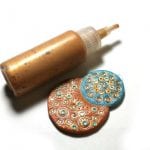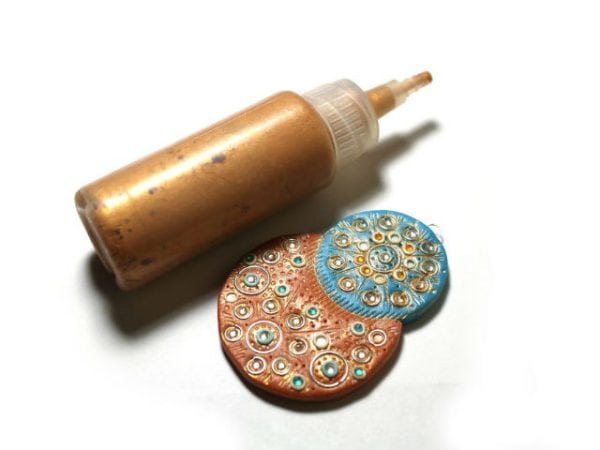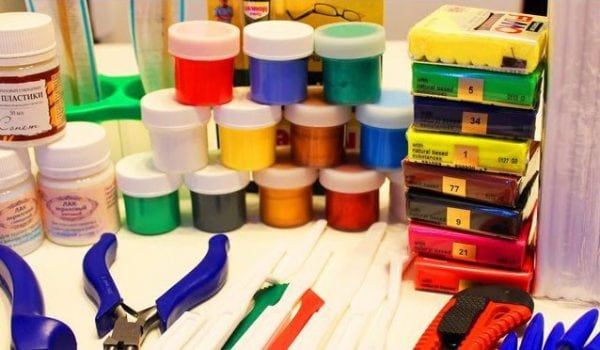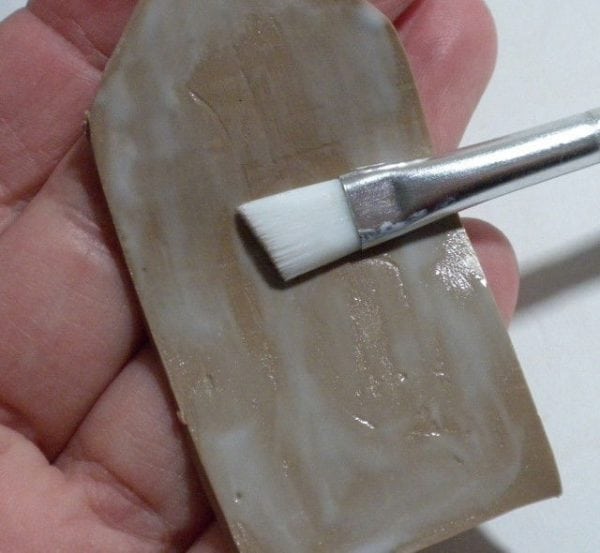Polymer plastic is used for sculpting small sculptures, products and jewelry. With the help of independently made sculptures, you can give any interior originality and exclusivity.
- Rules for working with plastic
- Using paints to work with clay
- Characterization of coloring compounds
- Preparatory stage
- Acrylic paints
- Polymer Clay Oil Paints
- Clay Ink
- Powder, crayons and pencils
- Clay spray aerosols

Ceramic products help to complement and dilute the interior with elegant figures or decorations in any color scheme, emphasizing the individuality of the room or room. And in order to create unique polymer clay products that would ideally suit your style or fit into the interior, you need to know how to use paint to add an attractive look, because the plastic itself is white.
Clay for interior decorations made at home is conditionally divided into two categories:
- the first option hardens by drying in air;
- the second option is the material that needs to be exposed to high temperatures, it is baked.
However, any version of work requires accuracy and caution in the manufacture of the product.
to contents ↑Rules for working with plastic
So that the creation process delivers only pleasant sensations, follow these rules:
- It is advisable to work with clay with gloves on.
- Upon completion of use, plastics, hands, tables, and other items that have been used must be thoroughly washed.
- It is not recommended to take plastic or polymer boards.
- All additional tools for working with plastic can not be used for other purposes (boards, knives and other tools should not be used for cooking).
- When working, take into account all the rules and advice of the manufacturer regarding the storage, solidification or baking of clay.
to contents ↑
Using paints to work with clay
Despite the fact that there is polymer clay in the right color, and you can do without additional coloring compounds, but it is the paint that allows you to make the product more vibrant, improve the quality and appearance of the product. For staining, you can use several types of dyes:
- acrylic;
- oil;
- ink;
- spray can;
- crayons and pencils;
- powder.
The amount of paint used depends on the desired color. In order to give the product a soft and pastel color, it is necessary to use a minimum amount of material, and so that the color is bright and saturated, the amount of substance can be safely increased.
After adding the coloring material, the clay needs to be thoroughly kneaded, otherwise the product will turn out with uneven, colorful stripes, such variations are also used in jewelry and products.
When using several color options, the paint must be selected of the same type and manufacturer in order to avoid combining different densities, colors and differing characteristics. Manufacturers provide tables that help achieve the desired color by combining and mixing existing paints.
Characterization of coloring compounds
Colorful products are characterized by light fastness, which marking of paints will help to understand. The light fastness of paints is indicated by asterisks.The most suitable dyes are with two or three stars.
For the base of the product, marking with a black square or half-filled square is suitable - such colorful materials are able to get rid of the transparency of polymer clay. The white square indicates transparency, which will give the product the properties of cold porcelain. A strikethrough white icon indicates that the colorant is translucent.
to contents ↑Preparatory stage
Before working with polymer clay, it is necessary to prepare all the tools that will be needed to paint the material:
- palette for paints;
- brushes;
- a container of water;
- napkins or paper;
- sponge.
Before applying the coloring materials, a primer must be applied to the clay. The primer of the surface will allow for a more uniform and high-quality color when applying paints.
Acrylic paints
Acrylic painting is the most widely used. As a material for coloring it is necessary to use high-quality art acrylic paints. They are better to take for work with clay, not required baking. However, in the presence of such a material, several dyeing experiments can be carried out.
It is important to consider the feature of acrylic paint - darkening after drying. When you first experience working with plastics and paints, you need to practice using dyes on paper, paying attention to the color and time spent on drying.
The main disadvantage of acrylic painting is its quick drying. However, there are options and opportunities for work to help avoid this:
- The first option is a drying inhibitor. An additional tool for work can be purchased with paints.
- Use a small amount of pigment on the palette to save drying material.
- To prepare more color, it is recommended to use jars that can be closed for the next use.
Polymer Clay Oil Paints
Oil paints are excellent for working with any kind of polymer material. When choosing a paint, you need to pay attention to the reviews about this product, the basis of the paint (oil) and test results. For the experiment, you can apply a small amount of paint on the baked clay and leave the material to dry. A positive result will be the lack of stickiness of the paint a month after application.
Oil painting options allow you to create amazing details and decoration elements:
- A small amount of material is used to make bedding and soft tones;
- Using a sponge or fabric, you can create the appearance of an antique surface. To do this, apply paint to the product and remove most of the material with a cloth;
- Paint will help create an imitation of precious stones in the product;
- To obtain a "marble" product, mix the colorful substance with clay before baking the decoration.
to contents ↑The main disadvantage of using oil coloring agents is the drying time. The full period can take up to six months, depending on the size of the product and the amount of material used.
Clay Ink
For coloring polymer clay, you can use special color inks. A wide range of ink allows you to paint the product in a translucent or transparent color, draw drawings on the details, tint them, give a marble look.
Using ink for coloring, it is necessary to study their properties, rules of use, drying time and interaction with clay. This will help you feedback or independent experiments.
to contents ↑
Powder, crayons and pencils
You can create the effect of metallic, additional colored elements that highlight the product, using powder or crayons for coloring polymer clay.
Mother of pearl powder gives the details the effect of radiance and shine. Powder dye can be mixed with an acrylic or oily paint base. A big plus in the use of powder is its quantity, and for work it is necessary to use very little material.
Crayons with pencils are also spent in small quantities. However, they require additional work. To use them, you first need to grind the coloring materials to a powder state. Pencils are used to create additional drawings and decoration elements.
to contents ↑Clay spray aerosols
Aerosols as dyes allow you to paint clay in a variety of colors with smooth and accurate transitions. Before using the aerosol, the clay is polished and coated with an acrylic base.
The main disadvantage of this staining option is the price of aerosols. Therefore, this method of painting the product is used only by professional firms and specialists.
Working with polymer clay requires thorough preparation and time. To do this, you can study video tutorials, understand the basic rules and features of clay products.
Spent efforts and time will reward the “sculptor” with exclusive decorations, original accessories and unique interior details.







